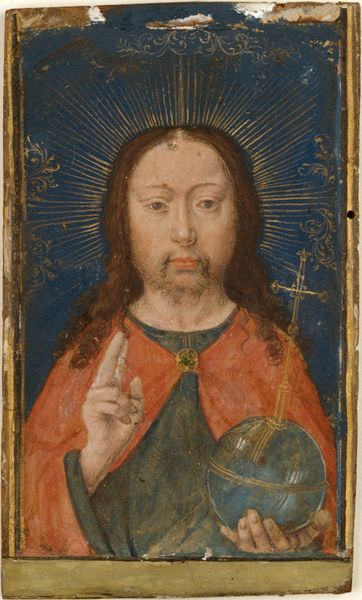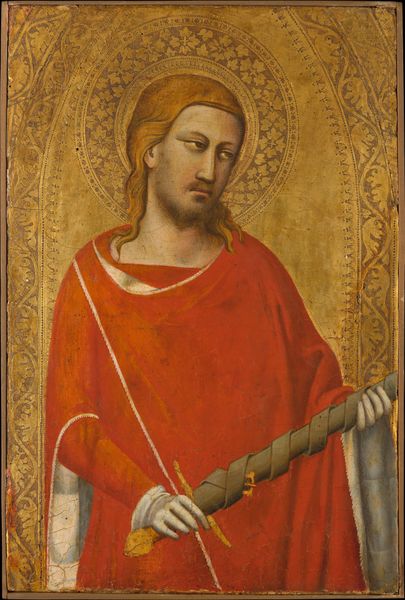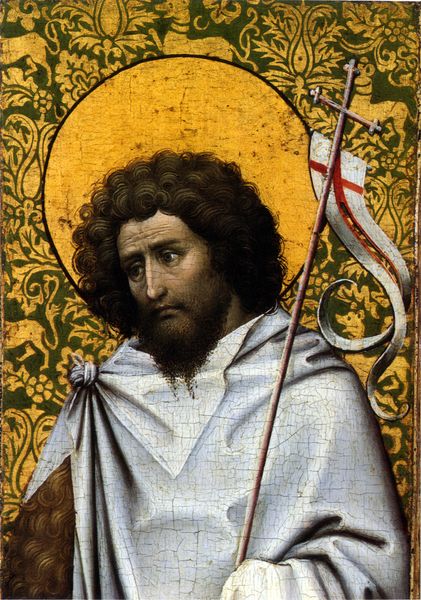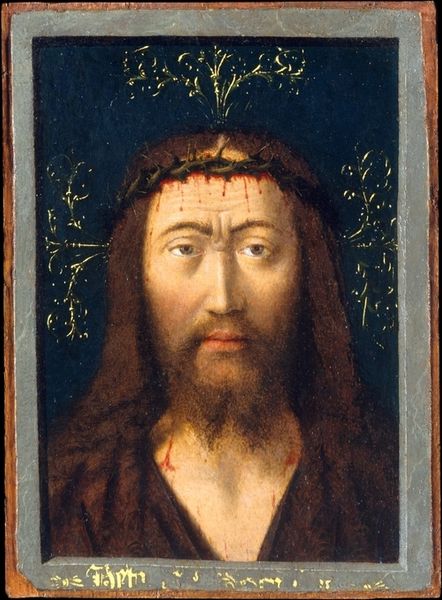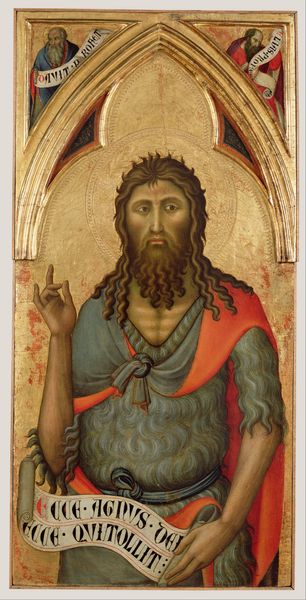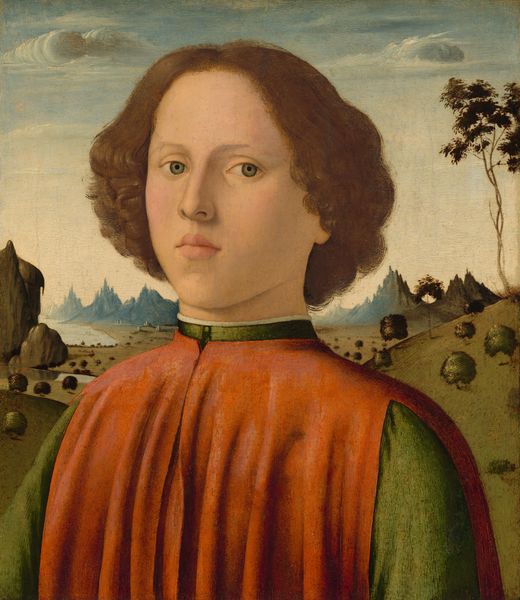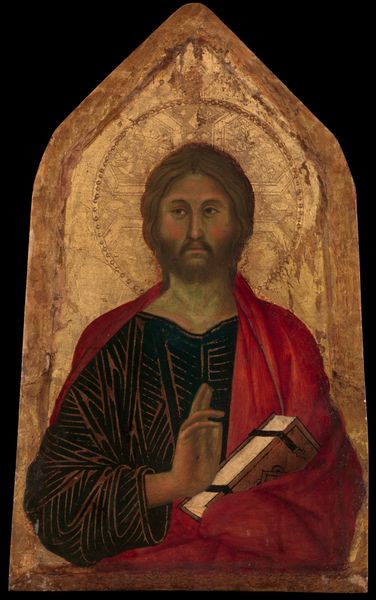
painting, oil-paint
#
portrait
#
painting
#
oil-paint
#
figuration
#
oil painting
#
jesus-christ
#
portrait head and shoulder
#
history-painting
#
italian-renaissance
#
portrait art
Copyright: Public Domain
Curator: Looking at this portrait head and shoulders from circa 1460 titled “Salvator Mundi,” an oil painting that currently resides here in the Städel Museum. What are your first impressions? Editor: Well, first off, I'm drawn to the gaze – slightly averted, maybe a little sad? But it's the clarity within that glass orb in his left hand that truly fascinates. The rendering seems almost otherworldly! It captures an entire vista inside a glassy sphere, yet seems like it contains so much melancholy and hope too, depending on how close you dare get to that reflection. It really makes me ponder how differently folks looked back then, through that glass clearly, or maybe darkly! Curator: Absolutely, that orb symbolizes Christ's dominion over the world, echoing ideas that evolved through centuries of symbolic thought that associated it with royalty and cosmos. Here we are seeing Jesus represented, not in narrative or as part of the multitude, but singularly bearing all power in his hands, the divine made corporeal. Take in consideration as well, that “Salvator Mundi” translates literally as "Savior of the World," a concept rooted deeply in Christianity. Editor: It's a hefty title to carry around, that's for sure. Savior! And I reckon that's why the right hand is raised, in benediction, I am reminded of medieval or even further antiquity in how the colors in this portrait of “Salvator Mundi” don't scream, or grab you as much, and in fact feel kind of... calm. Do you think there is a deliberate echo between styles and symbolic depth, even maybe eras. It almost has that feeling of someone knowing their place in time Curator: Precisely! Consider the time frame and its context as an artist trying to return to styles of ages gone. It seems less dramatic compared to High Renaissance works from the period that followed later. And while technically impressive and historically crucial with art movement of the Italian Renaissance—the use of tempera and oil allowing artists like this anonymous one to create these rich details—the use of portrait head and shoulder is striking as something so symbolic on its own as opposed to using it in relation to painting an aristocratic individual. Editor: Mmhmm, well what resonates strongest to me is actually that combination: of the earthly and what cannot be earthly, so intimate like a friend might strike a memory! So even while he stands there timeless, ageless, it reminds of stories that matter. Like he is actually here now, this face is what reminds humanity to keep their history with stories alive... so stories can tell each other someday about us too! It certainly brings the divine a bit closer to the mortal condition and soul, I would say. Curator: A beautiful observation, and with that thought, we'll allow viewers to form their own connections to this profound piece and it’s rich artistic memory from all points in history.
Comments
No comments
Be the first to comment and join the conversation on the ultimate creative platform.
